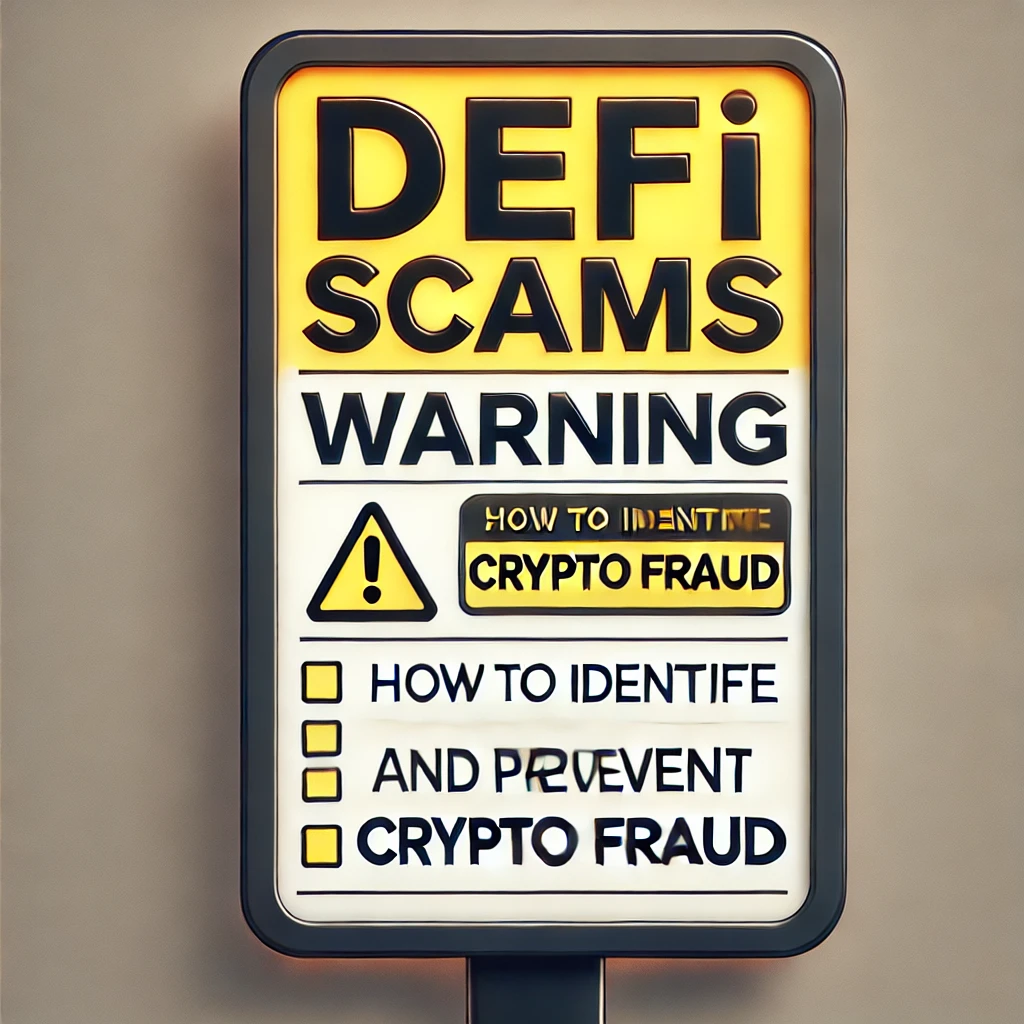DeFi Growth Brings Opportunities and Rising Scams
The decentralized finance (DeFi) sector has exploded in popularity, reaching a total value locked (TVL) of over $90 billion as of 2024. From decentralized lending and exchanges to automated market makers (AMMs), DeFi platforms offer investors lucrative financial opportunities.
However, with massive capital inflows, DeFi scams have also surged exponentially. According to Chainalysis, total crypto fraud losses in 2024 exceeded $3 billion, with DeFi scams accounting for 73%. Exploiting the decentralized nature of these platforms, fraudsters orchestrate sophisticated schemes that trap unsuspecting investors.
With scam tactics evolving rapidly, identifying genuine DeFi projects is becoming increasingly difficult. This article reveals the latest DeFi scam types, analyzes real fraud cases, and provides a practical guide to protecting your investments.
Part 1: Latest DeFi Scam Types & Real-World Cases
1. Rug Pull Scams
How This Scam Works
Rug pulls are among the most common scams in DeFi, where fraudulent developers create a fake project, lure investors with high returns, and suddenly withdraw all liquidity, causing the token to crash to zero.
Rug pulls typically happen in two ways:
- Liquidity Pull: Developers provide initial liquidity, attract investors, then remove all funds from the liquidity pool, crashing the token’s price.
- Sell Limit Trick: Fraudsters program the smart contract to only allow certain addresses to sell tokens, leaving regular investors unable to cash out.
Case Study: 2024 Inferno Drainer Scam
- Fraud Amount: $58 million
- Number of Victims: Over 40,000 investors
- Scam Method: The scammers used a “liquidity vampire” strategy to launch multiple fake DeFi projects, attracting short-term investments and withdrawing funds before investors could react.
Inferno Drainer acted as a plug-and-play fraud toolkit, allowing scammers to create fake DeFi protocols with fake promises of high returns. Once enough capital was accumulated, the scam teams disappeared, leaving investors with worthless tokens.
🔍 How to Identify a Rug Pull Scam?
- Watch out for anonymous teams: Check if the project team is publicly known and has a track record in DeFi.
- Audit the code and security: Use tools like CertiK or PeckShield to verify smart contract security.
- Check liquidity lock status: Use Token Sniffer to see if liquidity is locked and avoid projects with unlocked or short-term liquidity.
2. Flash Loan Attacks
How This Scam Works
Flash loans allow users to borrow large amounts of capital without collateral within a single transaction, which scammers exploit to manipulate market prices, causing DeFi platforms to collapse.
Case Study: Euler Finance Hack
- Attack Date: March 2024
- Losses: $197 million (Source: Blockworks)
- Attack Method: Hackers manipulated asset prices using flash loans, triggering wrongful liquidations that drained Euler Finance’s liquidity pool.
Euler Finance attempted negotiations with the hacker and managed to recover $90 million, but the attack still caused major losses.
🔍 How to Prevent Flash Loan Attacks?
- Avoid investing in newly launched, unaudited DeFi platforms.
- Ensure the DeFi platform uses price manipulation protection mechanisms, such as Chainlink’s multi-oracle price feeds.
- Diversify investments to avoid overexposure to a single DeFi protocol.
3. Fake Airdrops & Phishing Scams
How This Scam Works
Scammers promote “free airdrops” via social media or emails, tricking users into clicking malicious links and granting access to their wallets.
Case Study: Fake Uniswap Airdrop Scam
- Fraud Amount: $80 million
- Method: Hackers created a fake Uniswap website and promoted a “legitimate airdrop,” tricking users into connecting their wallets and stealing their private keys.
🔍 How to Avoid Airdrop Scams?
- Never click unknown links, even if they appear official.
- Use hardware wallets (Ledger, Trezor) to avoid exposing keys on browser wallets.
- Verify airdrops on official Twitter or Reddit channels before participating.
Part 2: Common Signs of DeFi Scams
- Too-good-to-be-true returns – If a project promises “high profits with no risk,” it’s likely a scam.
- Anonymous development teams – DeFi projects with undisclosed founders carry a high risk.
- No security audit – If a project hasn’t undergone an audit by CertiK or PeckShield, it may have security flaws.
- Overhyped social media campaigns – If a project aggressively promotes FOMO (fear of missing out) on Twitter and Discord, be cautious.
Part 3: How to Identify and Prevent DeFi Scams?
1. Research the Project’s Background
- Use DefiLlama to check the project’s TVL (total value locked) and avoid low-TVL projects.
- Check if the development team has experience in the DeFi space.
2. Verify Security Audits
- Ensure the project has been audited by reputable firms like CertiK or PeckShield.
3. Protect Your Wallet
- Never enter your private key or seed phrase on unknown websites.
- Use hardware wallets for long-term asset storage.
DeFi is a rapidly evolving industry, but the rise of scams is damaging its credibility. In the long run, stricter regulations and increased transparency are essential for DeFi to balance innovation and security.







